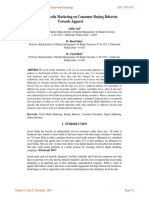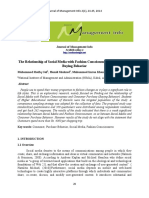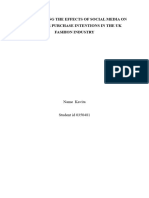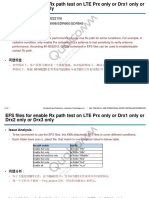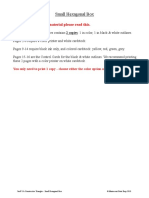0% found this document useful (0 votes)
21 views13 pagesFebin Dan Pro Mcom 1-Pages-1
The document outlines a study on the influence of social media marketing on consumer buying behavior in the fashion industry, particularly focusing on the youth demographic. It includes chapters on the introduction, literature review, theoretical framework, data analysis, findings, and conclusions, along with a detailed methodology and limitations of the study. The research aims to identify effective social media advertising practices and their impact on consumer perception and satisfaction regarding fashion products.
Uploaded by
akhilmathew082Copyright
© © All Rights Reserved
We take content rights seriously. If you suspect this is your content, claim it here.
Available Formats
Download as PDF, TXT or read online on Scribd
0% found this document useful (0 votes)
21 views13 pagesFebin Dan Pro Mcom 1-Pages-1
The document outlines a study on the influence of social media marketing on consumer buying behavior in the fashion industry, particularly focusing on the youth demographic. It includes chapters on the introduction, literature review, theoretical framework, data analysis, findings, and conclusions, along with a detailed methodology and limitations of the study. The research aims to identify effective social media advertising practices and their impact on consumer perception and satisfaction regarding fashion products.
Uploaded by
akhilmathew082Copyright
© © All Rights Reserved
We take content rights seriously. If you suspect this is your content, claim it here.
Available Formats
Download as PDF, TXT or read online on Scribd
/ 13









